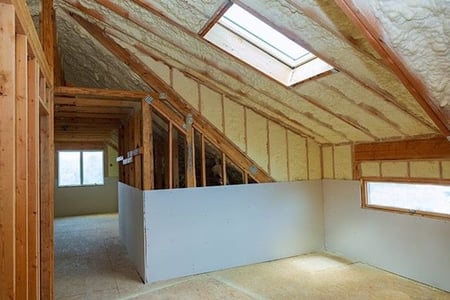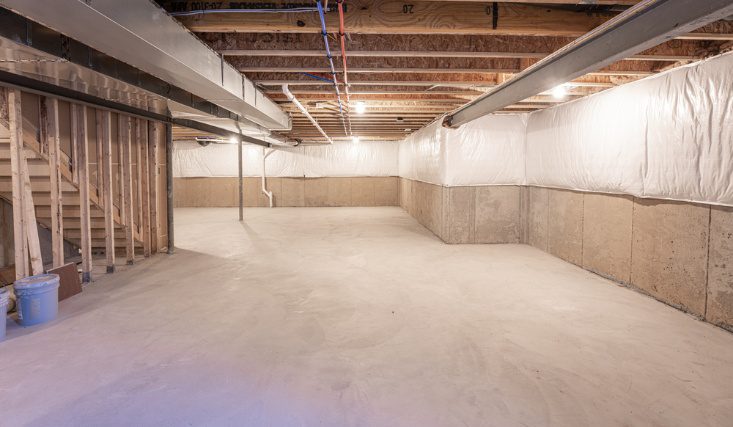
R49 and R60 are the two highest insulation ratings available, offering exceptional thermal performance for colder climates. Both are common choices for attic insulation, where their resistance to heat transfer provides the greatest benefit. But is it worth extra money for R60 instead of R49, and does it matter which material you choose?
Find out how to compare insulation values and when “going big” makes financial sense, even if your home is not zoned R60.
What Is the Difference Between R49 and R60?
Across all materials, R-value refers to thermal resistance, or how well any insulation resists heat transfer. A higher R-value means the material conducts less heat, which improves comfort throughout the home and lowers your heating and cooling costs.
R60 insulation is thicker than R49 insulation and offers substantial performance improvements, especially when replacing old insulation in attics and exterior walls.
R49 Vs. R60 Attic Insulation
Poorly insulated attics cause up to 25% of all heat loss in a home, which means they’re the best area to invest in new insulation. Depending on your home’s construction, the presence of old insulation that needs to be removed, and priorities like soundproofing, your Koala Insulation contractor will recommend an ideal insulation material.
Different materials achieve an R49 or R60 value based on the installed thickness or depth. That means installing R60 batt insulation will be thicker than R49 across all material types.
R49 and R60 Requirements and Thicknesses, By Zone
The International Energy Conservation Code (IECC), which informs residential and commercial building codes worldwide, requires insulation of specific R-values for eight Climate Zones. Neither R49 nor R60 is necessary in Zone 1, but they’re highly recommended elsewhere.
- R49 is recommended for attic insulation in Climate Zones 2 and 3.
- R60 is recommended for attic insulation in Climate Zones 4-8.
View the full map or check with your local Koala Insulation location for more information on your Climate Zone recommendations.
Here’s a breakdown of R-values for attics by material:
| Material |
R-value per inch |
Thickness for R49 (inches) |
Thickness for R60 (inches) |
| Blown-in Fiberglass |
2.5 |
19.6 |
24 |
| Blown-in Cellulose |
3.5 |
14 |
17.14 |
| Fiberglass Batts |
3.3 |
14.85 |
18.18 |
| Open-cell Spray Foam |
3.75 |
13.07 |
16 |
| Closed-cell Spray Foam |
6.5 |
7.54 |
9.23 |
| Rigid Foam Board (Extruded Polystyrene) |
5 |
9.8 |
12 |
| Rigid Foam Board (Polyisocyanurate) |
7.2 |
6.81 |
8.33 |
The highest R-value per square inch, rigid foam board, achieves an R49 rating in a third of the depth required by blown-in fiberglass, but is much more difficult to install in tight, cramped attics. That’s why installing insulation is often a balancing act between budget, ease of installation, and performance considerations.
When to Go with R60 Insulation for an Attic
For energy and cost-conscious homeowners in colder climates, R60 insulation is generally worth the added expense when:
- Your area experiences long, cold winters.
- Your home currently has insulation below the recommended R-value for your climate.
- You’ve already had your attic professionally air-sealed.
Make a Smart Insulation Investment
Looking to take the guesswork out of your insulation upgrade?
Go beyond charts and recommendations with an in-depth assessment by our experienced insulation contractors. We look at your home’s entire energy envelope to identify the best opportunities to save energy, plus the perfect materials and R-values to maximize your investment.
Find the Koala Insulation location nearest you to schedule a free estimate!
Find Your Location


Get a quote






